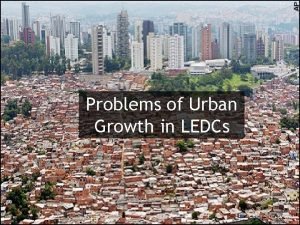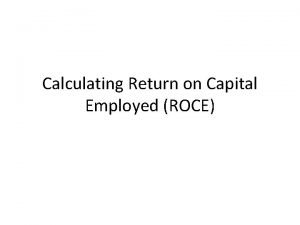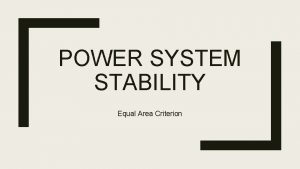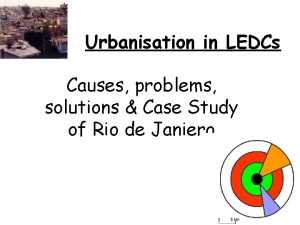Employment Structures Development LEDCs High employed in primary













- Slides: 13

Employment Structures & Development

LEDC’s • High % employed in primary sector • V. low % employed in secondary • Low % employed in tertiary

Large Primary sector • LIMITED EDUCATION OPPORTUNITIESLow literacy and numeracy rates limit employment prospects for many workers. Low skilled farming/mining work may be the only work available. • LOW CAPITAL AVAILABILITY - Labour intensive methods (more workers - fewer machines) reflect the lack of capital (money) available for investment in new machinery.

Large Primary sector • WEAK DEMAND FOR GOODS & SERVICES - A weak economy (low wealth) means little demand for the products of secondary and tertiary industries. • LOW PRODUCTIVITY - Labour intensive methods can reduce productivity and wealth creation. Workers may also be ignorant of modern methods.

Very small secondary sector • LACK OF DOMESTIC CAPITAL to invest in manufacturing activities. • LOW EDUCATION STANDARDS result in a limited availability of skilled workers. This may put off potential investors.

Very small secondary sector • LACK OF INVESTMENT IN BASIC INFRASTRUCTURE (eg. roads, ports, energy, and telecommunications). This may put off potential investors. • LITTLE DOMESTIC DEMAND for manufactured goods (few people have the money to buy consumer goods).

Small tertiary sector Mainly of low income services like retail (shops) and those in the public sector (government departments). • LOW LEVEL OF WEALTH means little demand for sophisticated services eg banking, insurance, medical care, education, business services, tourism etc. • LIMITED EDUCATIONAL OPPORTUNITIES mean that few are able to train to work in the more sophisticated service sector. • LACK OF CAPITAL AVAILABLE to invest in the service sector.

What happens as countries develop? • Primary sector continues to fall • Secondary sector grows • Tertiary sector grows

Why does this happen? • EDUCATION STANDARDS IMPROVE - More people acquire the skills needed to work in secondary and tertiary industries. • INCREASED WEALTH increases effective demand for manufactured goods and services.

Why does this happen? • LOW COSTS OF PRODUCTION (especially due to relatively low wages) attract investment capital. New factories are built and new jobs are created. • INCREASED MECHANISATION in the primary sector releases workers to take up better paid opportunities in the secondary and tertiary sectors.

What happens as they develop further? • Primary sector continues to fall. • Secondary sector starts to fall • Tertiary sector continues to dominate and rise. • Quaternary sector develops

Why does this happen? • IMPROVEMENTS IN TECHNOLOGY AND MECHANISATION lead to increased use of capital intensive methods in the primary & secondary sectors (machines replace people). Fewer jobs are available in these sectors. • HIGH WAGE COSTS lead some manufacturers to relocate production to counties with lower wages reducing employment in the secondary sector. Note that the high value work like design and marketing often remains as low wage economies lack the skilled workers required for these functions.

Why does this happen? • HIGH LEVELS OF WEALTH lead to growing demand for services like tourism and personal services (beauticians, personal trainers etc), and especially highly skilled services like banking, education, medical care, legal work (ie quartenary activities) • HIGH EDUCATION STANDARDS lead to a growth in the supply of highly skilled workers to all sectors, and especially to the tertiary & quartenary sectors.
 Urbanisation in ledcs
Urbanisation in ledcs Ledcs in africa
Ledcs in africa Employment structure
Employment structure Example of homologous structure
Example of homologous structure An entrepreneur is one who
An entrepreneur is one who Features of goodwill
Features of goodwill Capital employed means
Capital employed means Capital employed formula
Capital employed formula Protoplast transformation
Protoplast transformation Principles of remedial instruction
Principles of remedial instruction Self-employed dog trainer salary
Self-employed dog trainer salary Equal area criterion is employed to determine
Equal area criterion is employed to determine Arbitrary assessment method of valuation of goodwill
Arbitrary assessment method of valuation of goodwill Bone blending is a technique employed for
Bone blending is a technique employed for
























